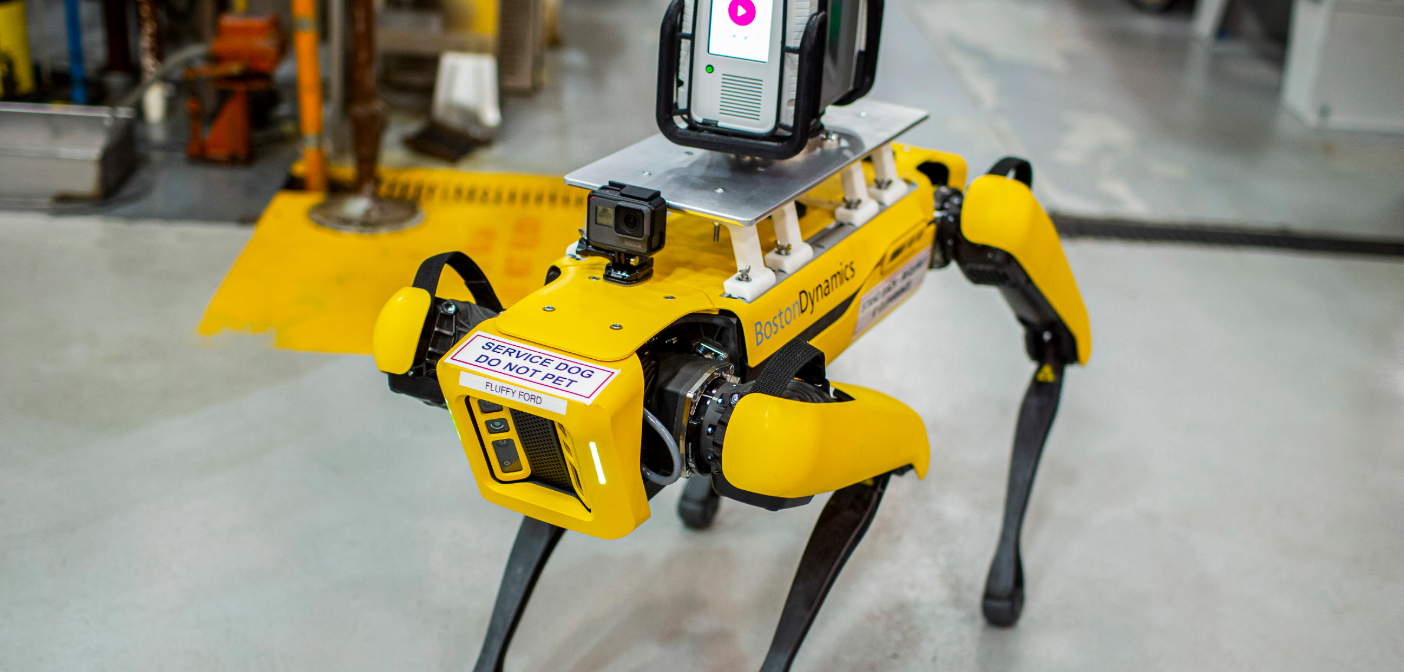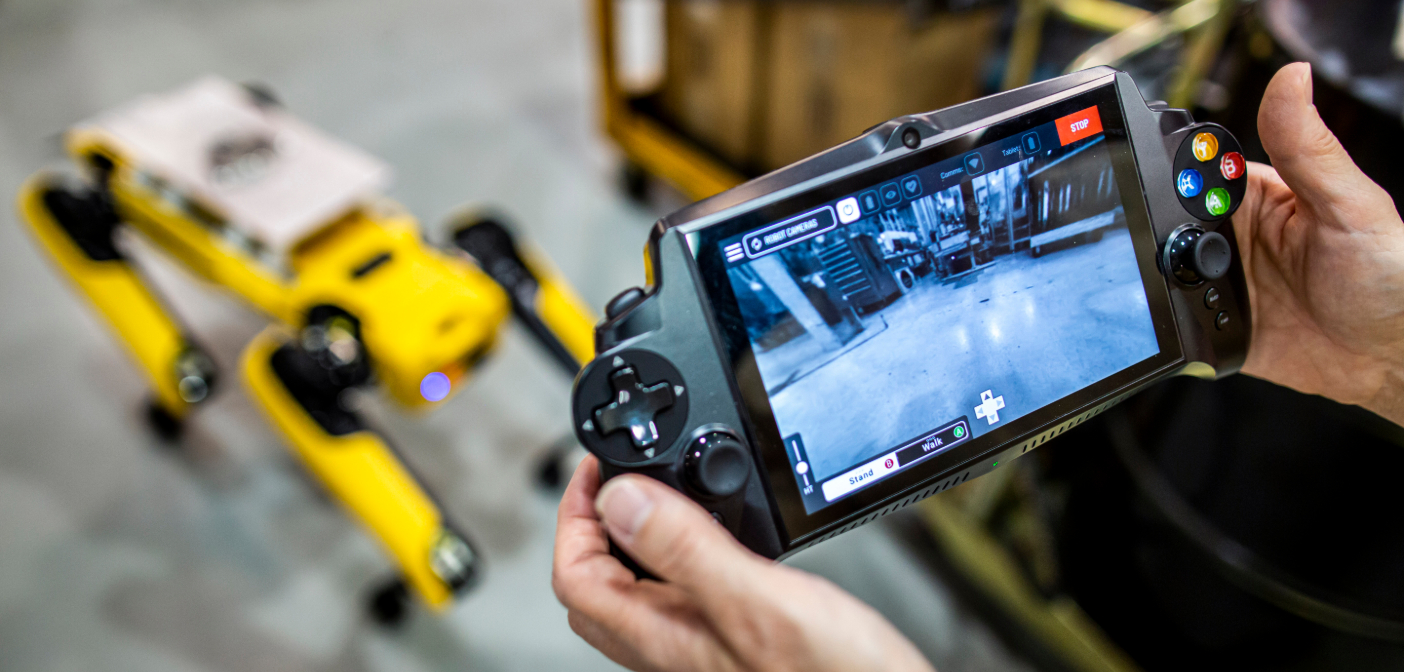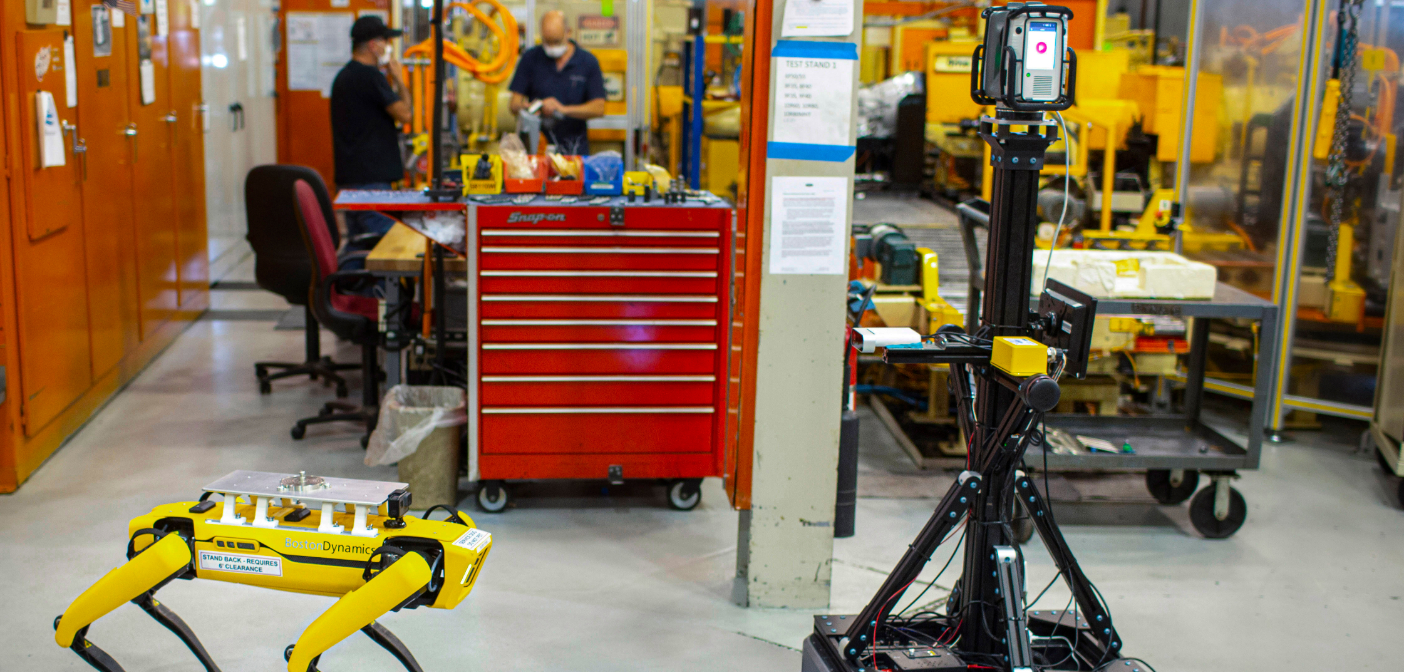US automaker Ford is leasing two four-legged dog-like robots from Boston Dynamics as part of a manufacturing pilot programme designed to save time, reduce cost and increase efficiency.
The 70 lb quadruped robots, named Fluffy – given by the robot’s handler Paula Wiebelhaus – and Spot – after the product’s actual name – will be deployed at Ford’s Van Dyke Transmission Plant in Sterling Heights, Michigan, in early August to laser-scan the facility and help engineers update the original computer-aided design, which is used by the company when getting ready to retool its plants.
Each equipped with five cameras that can perform 360-degree scans, the robots can also handle 30-degree grades and climb stairs, travelling up to 3mph on a battery lasting nearly two hours.
“We design and build the plant. After that, over the years, changes are made that rarely get documented,” said Mark Goderis, Ford’s digital engineering manager. “By having the robots scan our facility, we can see what it actually looks like now and build a new engineering model. That digital model is then used when we need to retool the plant for new products.”

According to Goderis, without the robots, the update would be far more tedious. “We used to use a tripod, and we would walk around the facility stopping at different locations, each time standing around for five minutes waiting for the laser to scan. Scanning one plant could take two weeks. With [the robots’] help, we are able to do it in half the time.”
The previous method also was expensive, reportedly costing nearly US$300,000 to scan one facility. If this pilot works, Ford said its manufacturing team could scan all its plants for a fraction of the cost. As such, Ford said it hopes that these technologies help save the company money and retool facilities faster, ultimately helping bring new vehicles to market sooner.
In future, Ford intends to be able to operate the robots remotely, programming them for plant missions and receiving reports immediately from anywhere in the country. Currently, the robots can be programmed to follow a specific path and can be operated from up to 50m away with the out-of-the-box tablet application.

Wiebelhaus controls her robot through a gaming-like device that allows her to remotely see the camera view. Should an issue occur, Wiebelhaus’ control device features a safe stop that stops it from colliding with anything.
Furthermore, the robots have three operational gaits – a walk for stable ground, an amble for uneven terrain and a special speed for stairs. They can change positions from a crouch to a stretch, which allows them to be deployed to difficult-to-reach areas within the plant. They can also handle tough terrain, from grates to steps to 30-degree inclines. If they fall, they can right themselves. They are also programmed to maintain a safe, set distance from objects to prevent collisions.

At times, Fluffy rides on the back of a small, round autonomous mobile robot, known informally as Scouter. Scouter travels up and down the aisles of the plant, allowing Fluffy to conserve battery power. Scouter can autonomously navigate facilities while scanning and capturing 3D point clouds to generate a CAD of the facility. If an area is too tight for Scouter, Fluffy performs the task instead.







